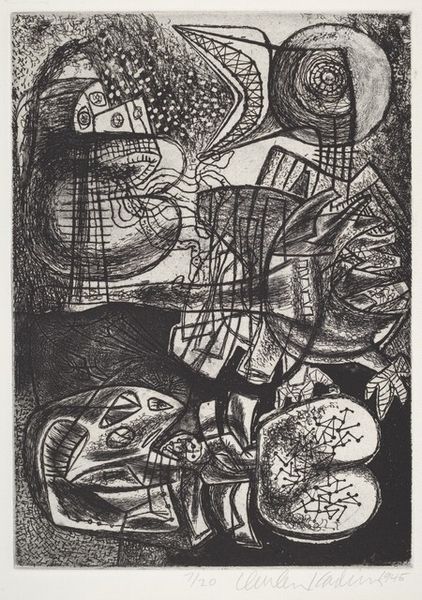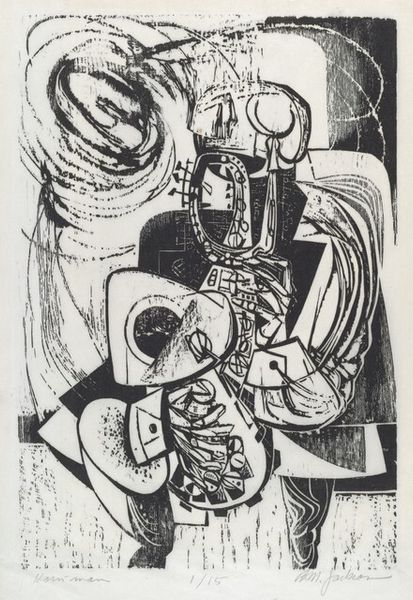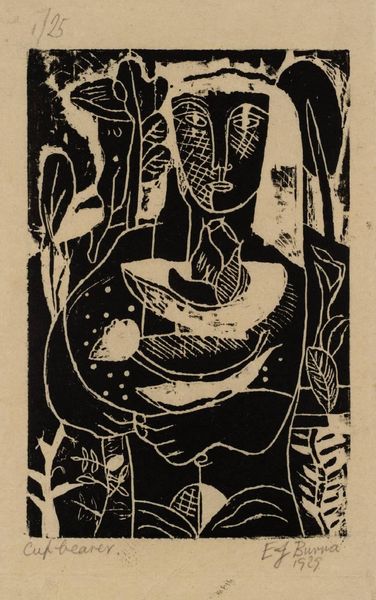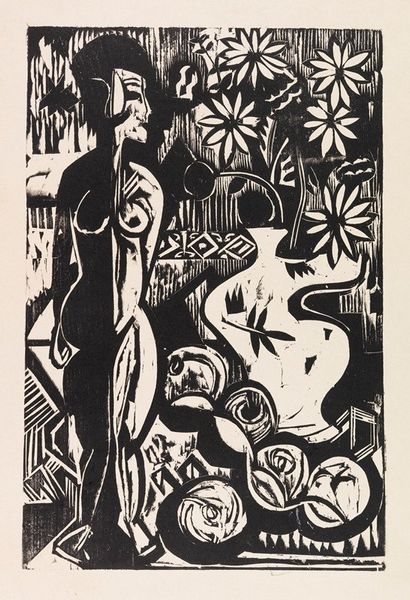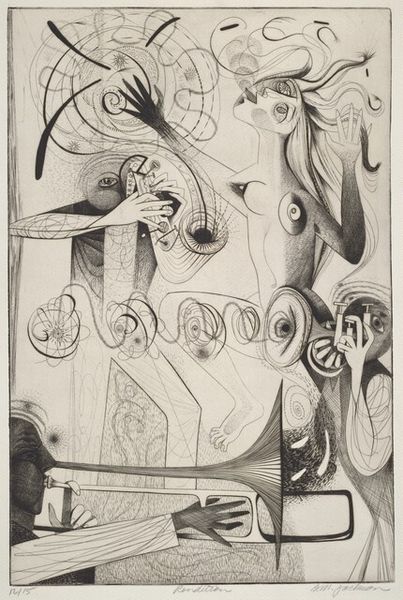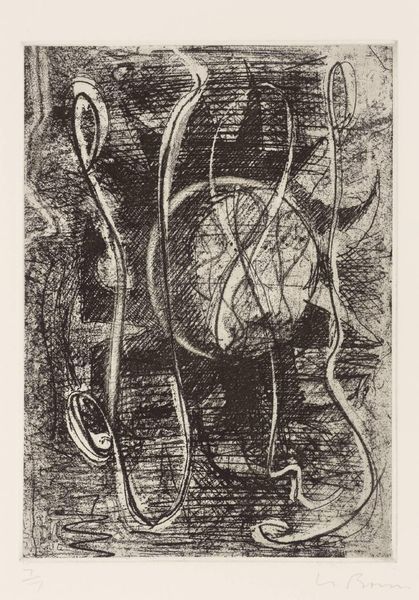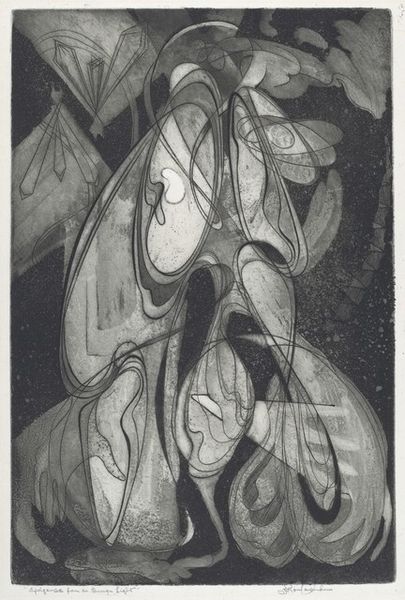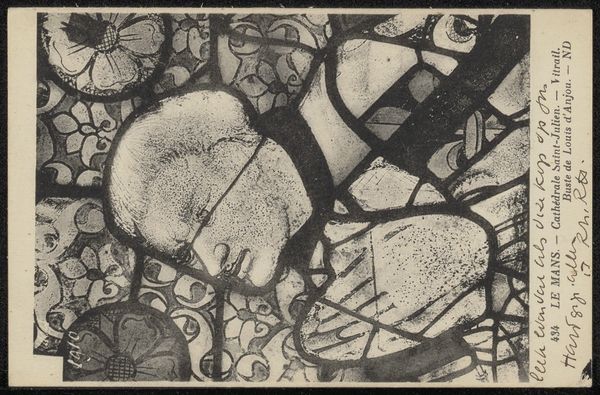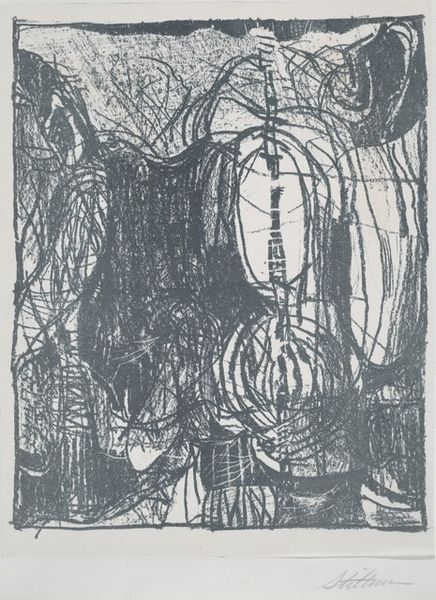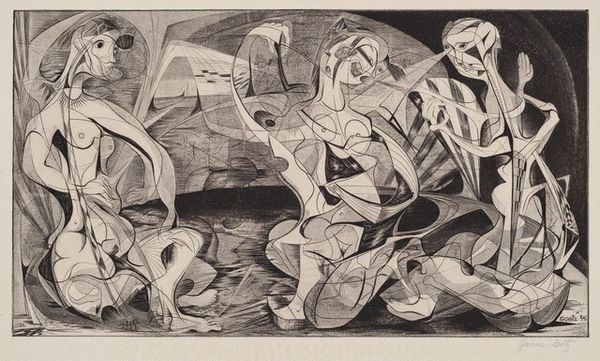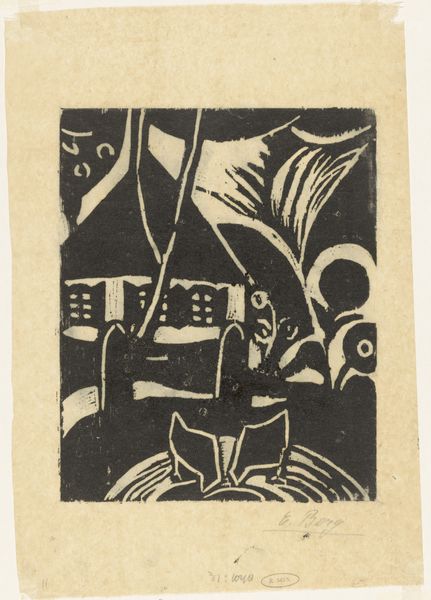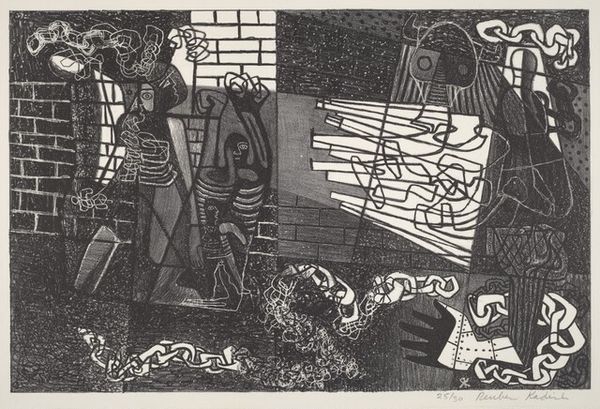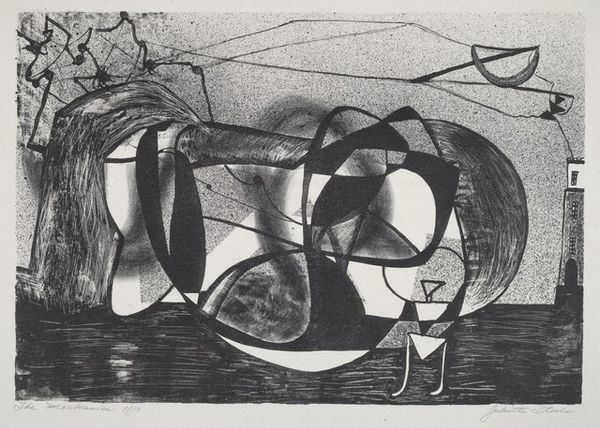
drawing, print
#
drawing
# print
#
geometric
#
abstraction
Dimensions: image: 430 x 282 mm sheet: 500 x 318 mm
Copyright: National Gallery of Art: CC0 1.0
Curator: Welcome. Today, we’re looking at Billy Morrow Jackson's "Prepared Jukebox," a print believed to have been created sometime between 1954 and 1955. Editor: Wow, this is certainly striking! It’s almost overwhelming, like looking inside the chaotic mechanism of a musical contraption. The textures are incredible—such varied mark-making. Curator: The title is certainly suggestive. 'Prepared', in musical terms, references altering an instrument's timbre by placing objects on or between its strings or hammers. You see something similar here in the abstraction of form. Jackson captures this process visually, doesn't he? Editor: Absolutely! And that speaks to the materials themselves, doesn’t it? This looks like it was made with such deliberation; I see an intense focus on the carved lines and the resulting contrast, with each shape feeling very deliberate. There is something deeply material about its construction. Curator: It's fascinating to consider this piece within the broader cultural landscape of the mid-1950s. Think about the rise of consumer culture, rock and roll, and the growing popularity of jukeboxes in public spaces. Jackson seems to be responding to this new sonic and social environment. Editor: I agree. Thinking of it in terms of its production, there is so much repetitive detail, like little alphabet blocks near the top. Do you see the small rows of square holes to the right of them too? I almost sense a bit of frustration in its density. The act of creating this print would have taken considerable labor. I feel it when I look closely at this work. Curator: Perhaps frustration, or maybe an attempt to dissect and reassemble something deeply embedded in American culture at the time. To render something ubiquitous newly strange. The print participates in the discussions about cultural expression. How, for instance, should art approach mass media? Should art be critical of technological development? Editor: So, are we suggesting that Jackson deconstructs the sounds of modernity? In all its clamorous commercialism? He is absolutely turning inside out that glossy veneer you see in advertisements of that time. What is its value outside of social experience? Curator: That’s a brilliant interpretation. Considering its role in the public imagination then, perhaps. It is a piece that continues to challenge our perception. Editor: I have certainly shifted my initial reading and think of what constitutes sound today in our digitized social world. Food for thought.
Comments
No comments
Be the first to comment and join the conversation on the ultimate creative platform.
